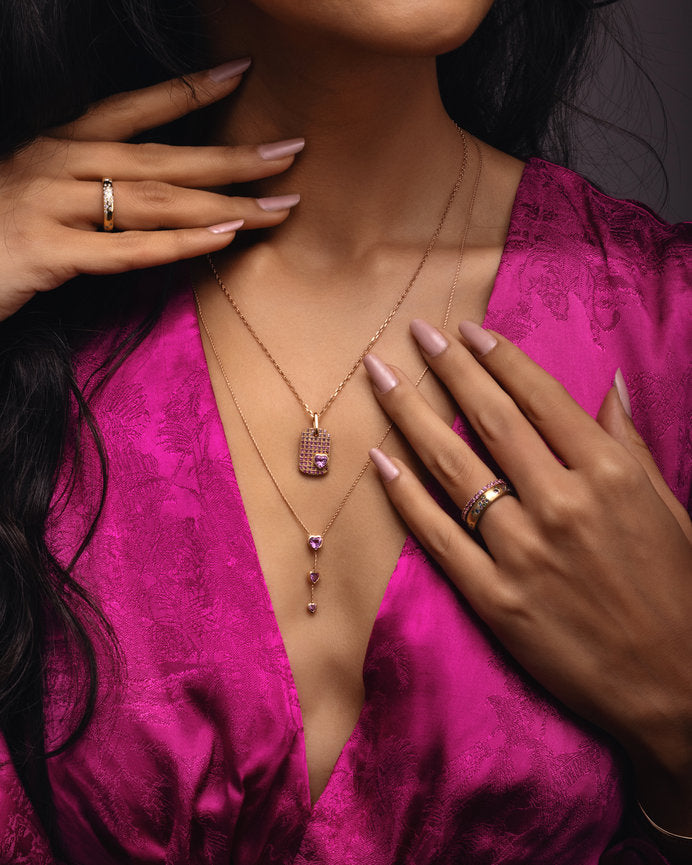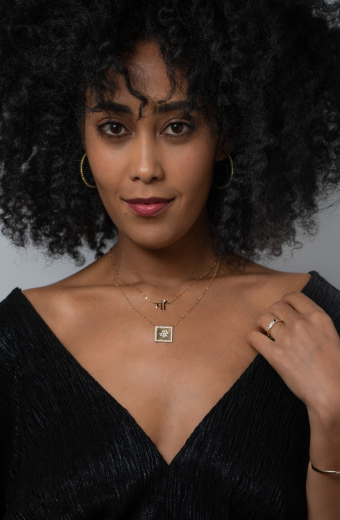
What better way to bid March adieu than to give you a quick comparison of some blue gemstones other than Aquamarine that may be a little more budget friendly?
But first, a short intro to the hero of the month. Aquamarine is a beautiful blue to greenish-blue gemstone that is part of the beryl family (think emeralds). Its name comes from the Latin "aqua marina," which means "sea water," a nod to its sparkling ocean-like color. The gemstone's hues can range from the lightest blue to deeper shades, reminiscent of the sea.
Aquamarine, blue topaz and blue zircon, while may have some similarities in color, are distinct gemstones with different physical and chemical properties. It is important to note that all three are minerals which in their cut and polished form are referred to as gemstones. The term "gemstone" implies that the material is not only aesthetically pleasing but also durable and rare enough to have value.
Aquamarine - Blue Topaz - Blue Zircon - A Comparative Guide
A quick snapshot of the characteristics of the three blue beauties is helpful
Swipe Right →
| Attributes | Aquamarine | Blue Topaz | Blue Zircon |
| Family Type | Beryl | Topaz | Neosilicate |
| Chemical Composition | Be₃Al₂(SiO₃)₆ - blue color is primarily due to the presence of ferrous iron. | Al₂SiO₄(F,OH)₂ - the blue color in topaz can occur naturally, but most commercially available blue topaz has been heat-treated and irradiated to enhance its color. | ZrSiO₄- Zirconium silicate mineral. |
| Hardness on the Mohs Scale | 7.5 to 8 | Slightly harder than Aquamarine - 8 | 6.5 to 7.5 |
| Color Range | Light to deep blue, often with a slight greenish tint. The most sought-after shade is a deep, intense blue. | Commonly found in three main shades: Sky Blue Topaz (the lightest), Swiss Blue Topaz (bright and medium blue), and London Blue Topaz (dark and grayish blue). | Zircon can be found in a variety of colors, including clear, yellow, red, green, gray, and blue. Blue zircon is achieved by heating brown or gray zircon. |
| Value | More valuable than Blue Topaz or Blue Zircon. The most valued aquamarine stones are those with a deep, intense blue color, which is less common due to its natural rarity. Large aquamarines are more readily available than other gemstones, which can influence their value. | Blue Topaz is more commonly the result of treating colorless or lightly tinted topaz. | Zircon varies in value depending on the color and quality. High-quality blue zircon can be quite valuable. Zircon is sometimes confused with cubic zirconia, a synthetic diamond simulant, which is not related to natural zircon and is much less valuable. |
| Rarity | Aquamarine stones with a deep, intense blue color, are rarer. | Because the process of enhancing topaz is well-established and the raw materials are relatively abundant, blue topaz is more affordable and widely available than aquamarine. | While zircon itself is not rare, the naturally occurring blue zircon is relatively uncommon and rare. Most blue zircon available in the market is heat treated. |
| Spiritual Symbolism | Stone of sailors and is believed to bring protection at sea. It is also associated with tranquility, clarity, and marital happiness. | Blue Topaz is often associated with loyalty, love, and clarity of feelings. It is considered to aid in communication and calming the mind. | Zircon is one of the oldest minerals on Earth and carries various symbolic meanings, including promoting wisdom, wealth, and protection for travelers. |
| Birthstone Month | March | December | December |
| Durability & Care | Durable enough for everyday wear, but requires care to prevent scratching, chipping, or exposure to harsh chemicals. Aquamarine, being slightly softer, may need a bit more care than blue topaz. | Durable enough for everyday wear, but requires care to prevent scratching, chipping, or exposure to harsh chemicals. | Zircon can be brittle and prone to chipping, so it requires protective settings, especially in rings. |
| Use | Popular in jewelry that signifies water-related themes or as a gift for those born in March. | Popular in jewelry especially since it is harder than Aquamarine and also more budget-friendly. | Zircon is also known for its high refractive index and strong fire (dispersion), which can give it a brilliant sparkle similar to diamonds. Prized for its brilliance and multicolor flashes. |
Some examples of beautiful jewelry pieces in Aquamarine include:
Overall though, when choosing between aquamarine, blue topaz or blue zircon for your jewelry wishes and wants, you should consider not only the color, cost and appearance of the gemstone, but also the symbolism, value, and the story you want your jewelry to tell.
Aquamarine is a More Historically Significant Gemstone, Blue Topaz & Blue Zircon Are Modern Gemstones
While the Aquamarine gemstone has been known and valued for thousands of years, with its history intertwined with various cultures around the globe, blue topaz and blue zircon are relatively modern gemstones. Aquamarines have been found in Egyptian and Sumerian tombs, indicating their long-standing value and use.
Blue topaz is a popular gemstone used in modern jewelry for its beautiful range of blue hues and affordability, it doesn't have as many historically significant pieces or storied pasts.This is partly because the widespread use of blue topaz, particularly the vibrant shades of treated blue topaz (like Swiss Blue and London Blue), is a relatively recent development, becoming popular in the 20th century.
The process of irradiating and heating topaz to achieve these vivid blue colors was perfected and became commercially viable only in the latter half of the 20th century. Therefore, while ancient civilizations knew of topaz, the blue topaz in the colors we commonly see today would not have been available to them.
Similarly, Blue zircon, despite its beauty and centuries-old use, doesn't have as prominent a presence in historically significant pieces of jewelry. One reason for this might be the gemstone's historical confusion with other stones. Before the development of modern gemology, many gems were classified by their color rather than their mineral structure, so blue zircon could have been mistaken for sapphire or other blue stones. As a result, zircon might not have been specifically identified or celebrated in the context of historically significant jewelry.
Historically Significant Aquamarine Jewelry
There are several historically significant jewelry pieces and artifacts featuring the aquamarine gemstone.
First, although not a piece of wearable jewelry, the Dom Pedro Aquamarine is worth mentioning due to its significance as the largest cut and polished aquamarine gemstone in the world. It was originally part of a larger crystal that was found in Brazil in the late 20th century and was cut into a stunning obelisk by gem artist Bernd Munsteiner. The piece is named after the first Emperor of Brazil, Dom Pedro I, and is displayed at the Smithsonian Institution's National Museum of Natural History.

The most iconic and historically significant jewelry featuring aquamarine is Queen Elizabeth II's Aquamarine Collection. Queen Elizabeth II received large aquamarine stones as a gift from the Brazilian government in 1953. These stones were later fashioned into a necklace and earrings, which were part of a larger parure that included a tiara and a bracelet. The Queen has been seen wearing these pieces on various occasions, showcasing their elegance and the gemstone's regal appeal.

The Aquamarine Tiara of Princess Margaret: Princess Margaret, the sister of Queen Elizabeth II, had a beautiful aquamarine and diamond tiara that was a notable part of her jewelry collection. It featured three large aquamarines set in a design that could be converted into a necklace, showcasing the versatility and beauty of aquamarine in royal jewelry.

The Roosevelt Aquamarine: In 1936, Brazilian President Getúlio Vargas presented a large, spectacular aquamarine - 1,298 carats - to First Lady Eleanor Roosevelt. This aquamarine was notable for its size and quality, and it was a diplomatic gift symbolizing the friendship between Brazil and the United States. The stone is one of the largest gem-quality aquamarines ever found.
As is clear, Aquamarine’s captivating color and clarity make it a favorite for significant, statement-making jewelry pieces. Its beauty and rarity demonstrate its lasting popularity and association with nobility, making it a highly sought-after gemstone throughout history.









